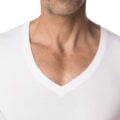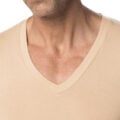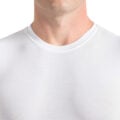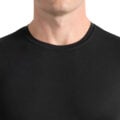

The Ultimate Guide To Business Professional Attire For Men
Business professional is a step up from business casual. Learn the ropes of this dress code and never look out of place.
-
By Leigh McKenzie
- Updated: February 7, 2023

Our approach to content is the same as our approach to building a great wardrobe: it's about quality, not quantity. We only recommend products we believe in and would buy for ourselves or a friend.
Here's our editorial promise:
- We only recommend products we believe in and would buy for ourselves or a friend.
- We don’t accept payment for reviews, ever. We do sometimes receive press samples.
- Every review is hands-on, meaning we actually test drive the products.
- We cover brands regardless of our relationship with them (i.e., brands that don’t offer payment for traffic).
Your trust is our #1 priority, always. Please reach out with any questions, concerns or suggestions (service@underfit.com).
Business professional attire, a step up from business casual, is a common dress code for the more conservative workplace. By mastering business professional attire, men present a sharp, sophisticated image that conveys competence in the workplace.
And, if you fail to dress appropriately in business professional attire, your boss, clients, and colleagues might question your suitability for the job.
In this article, we’ll go over exactly how to meet a business professional dress code, in style.
What Is Business Professional Attire?
A common dress code for law and banking offices, the business professional dress code is the most restrictive dress code you’ll find in a workplace, just a step down from business formal.
Though you can pass without a full suit, wearing one ensures you look the part, with minimal effort. Aside from slacks and a jacket, you’ll need to wear a tie, as well as polished leather shoes.
The 5 Basic Types Of Workplace Attire
Professional business attire is one of the more strict dress codes. Less conservative work environments are often satisfied with a less formal dress code. The trick to mastering the perfect work wardrobe is to know your workplace.
- Casual – the casual dress code is open to anything acceptable to wear in public. If your workplace permits a fully casual dress code, you can leave the blazer in your closet and kick back in your favorite t-shirt, jeans, and sneakers.
- Smart casual – a little more refined than full casual, the smart casual dress code is a bit of a gray area. Typically, no more than dark denim, short sleeved collared shirts, and clean sneakers is fine, as long as everything is clean and wrinkle-free. Steer clear of anything with a hood, graphic tees, or distressed jeans.
- Business casual – another step up, a polo shirt, long-sleeved collared shirt, or sweater with some slacks and leather shoes is enough. Throw on a sport coat or blazer for a more professional vibe, and skip the tie.
- Business professional – for the business professional dress code, you will need a suit jacket and matching dress trousers. Expect to wear a long-sleeved, button up shirt and tie, as well as polished dress shoes.
- Business formal – business formal wear is the most strict and polished professional dress code, requiring a full dark-colored suit, a white long-sleeve button up shirt, a necktie, and leather dress shoes.
Read More: Semi-Formal vs. Formal Attire
What Is Considered Business Professional Attire?
If your workplace offers a more casual dress code you have more flexibility in what you wear, but for professional business attire, the rules are pretty much laid out.
Although, that isn’t to say you have no space to get creative. You steep in some individuality through suit color, pattern, style, and accessories.
Business Professional Suits & Jackets
Your suit should be a solid, dark or neutral color, ideally navy blue or charcoal gray. Stick with a two-piece suit here, as a three-piece is just a shade too formal.
You may opt to switch the dress pants for pressed pants or slacks and pair them with a separate suit jacket or blazer. Be sure to play up the accessories here to keep it formal – wear a solid tie, cufflinks, or pocket square to round out your look.
Business Professional Dress Shirts & Dress Pants
Choosing a dress shirt means picking out the perfect long-sleeved, button-up shirt. Err toward solid colors, and typically lighter shades – white and light blue are always a safe choice. You might try a subtle stripe to contrast your solid suit and tie.
A button-up shirt is a standard shirt with buttons on the front. A button-down shirt is the same, with extra buttons on the collar. Designed for polo players, this shirt has worked its way into professional attire and may be worn with or without a tie. The button-down shirt can be worn with a suit but is an ideal partner for the sport coat.
Suit pants are the partner to your suit jacket, typically in the same color, pattern, and material. To stay business professional, stick with suit pants – chinos and khakis are a sort of midway point between casual and super formal attire. They go nicely with the less austere but still professional sport coat and button-down shirt, a more business casual vibe.
Business Professional Sweaters & Cardigans
During the colder weather, it is appropriate to add a sweater over your shirt. Your sweater should be a simple, solid color with a v-neck to showcase your matching shirt and tie, and stick with a nicer fabric like cashmere or wool to look your most polished. Stay away from crewnecks and cardigans, as they verge on the casual.
Business Professional Dress Shoes
The following are acceptable dress shoes for a business professional setting: .
- Oxfords – classic and timeless, the oxford is a versatile dress shoe with a slim contour, closed lacing, and minimal detailing. In a business professional setting, opt for black, dark brown, or tan. Oxford-style rules prefer a plain, darker sock.
- Monk straps – this type of shoe uses single or double straps with buckles instead of laces. Monk straps are often two-tone or otherwise decorated, so wear them wisely as they tend to draw attention. These shoes can be paired with suits or cuffed chinos, but fair better with dark and solid color ensembles.
- Brogues – any type of shoe can be considered a brogue since the term refers not to a shape or style but the decorative, patterned perforations across the toe cap. Full, semi, quarter, and longwing brogues all fit different levels of formality. Quarter brogues are ideal for toning down a more colorful outfit, while full brogues make for more of a statement piece.
- Loafers – loafers are slip-on shoes, often decorated with a metal strip across the front or a small tassel. Perfect in a more laid back business professional setting, reserve loafers for daytime or summertime events.
Business Professional Accessories
Accessories are a great way to add some individual flair to your outfit. The following accessories are great options for a business professional look:
- Neckties – solid colors are preferred in a professional setting, though a striped tie or pattern is often acceptable. Make a feature of your necktie; master the Windsor knot and tie your necktie with perfect symmetry, then decorate it with a simple tie clip in gold or silver to match your wristwatch.
- Pocket squares – completely optional but never unnoticed, the pocket square is a timeless accessory that makes the wearer stand out as a fashion-forward gentleman. The pocket square must match the tie in color, and make sure to fold it neatly in your pocket.
- Cufflinks – cufflinks add that extra splash of pizazz and allow you to inject a little touch of personalization. Veer away from novelty cufflinks and keep to simple gold or silver and make sure the metal matches your tie clip and watch.
- Belts – go for a black or brown belt with a simple buckle. Flat belts are ideal for the business setting, as a woven or textured belt tends to be too casual. Style it simply by completely tucking your shirt in and always make sure you match your belt with your shoes.
- Dress socks – professional shoes will reveal your socks when you sit down, so choose your socks wisely. They should either blend in as gray, navy, or black to match your suit or, if you’re feeling funky, add a splash of color or fun pattern.
Putting Together Your Business Professional Look: Do’s And Don’ts
Whether you want to stand out as best dressed or blend in, there are a few do’s and don’ts you must be aware of when cultivating your professional wardrobe.
Business Professional Do’s
- Find a great tailor – you don’t need to spend thousands on a bespoke suit to look and feel your best. For a fraction of a cost, between $50 – $200, a tailored suit will look like an extension of you, minimizing bagginess and ensuring your suit highlights your best features.
- Accessorize – wear a tie, a belt, and some socks, and experiment with tie clips, cufflinks, and pocket squares. Be sure to match metals and colors, and don’t be afraid to take some risks.
- Wear an undershirt – wearing an undershirt can do you a lot of favors – it will give you shape, conceal your nipples, and protect your suit from sweat stains and odor. Always opt for a form-fitting undershirt over a baggy one to avoid ‘undershirt gut,’ which can leave you looking sloppy, and much heavier than you actually are.
- Stick to solid colors – solid colors, or small-scale patterns like pinstripes and herringbone, should always be your base. Then, you can use solid colors to experiment and jazz up your outfit.
- Invest in your essentials – the great thing about business professional attire is that it is, essentially, a capsule wardrobe. This entire look is built on a few key essentials, embellished with ties and socks. So, don’t cheap out. Invest in good items now to set yourself up for the long run.
Business Professional Don’ts
- Wear short-sleeved shirts – t-shirts, polo shirts, and short-sleeved button-up shirts all belong in the business casual dress code. In the warmer months wear a thin, light-colored shirt and maybe turn up the sleeves a little. Uncovered elbows do not belong in a place of business, and no workplace wants to see your armpits.
- Ignore scuffed shoes – polishing your shoes once a week using real polish ensures you start every week with a pair of shoes that look new. The snappiest dresser will keep roll-on shoe polish in their desk drawer for emergency touch-ups in the case of a scuff.
- Pair mismatched colors – always match your tie to your suit, and your belt to your shoes. Also – your metals should always match, all silver or all gold.
Business Professional FAQs
Do I have to wear a suit for business professional dress codes?
A suit is preferred, but you can opt for a smart sport coat or blazer and a pair of slacks in a pinch. A suit is the classic, easy way to go. There is less room for error and you will draw less attention.
Can you be business professional without a blazer?
A business professional dress code demands some sort of jacket, but you can present as business professional without wearing it. Walking around the office or sitting in a meeting, you can just wear your shirt and tie, or even a v-neck sweater.
However, your blazer or jacket should be with you, hung on your office door, or on the back of your chair ready to adorn at a moment’s notice.
What’s the difference between business professional attire and business casual attire?
The business casual dress code is open to slightly more casual clothes, including polo shirts, short-sleeved shirts, and even dark denim jeans. Business professional, however, requires a full suit.
Wear Your Business Professional Attire With Confidence
Mastering business professional attire might seem like a minefield, but it follows simple logic. If you are new to the world of dressing for business, take things slow. Master the suit, shirt, and shoes first, before experimenting with color or accessories.
While building out your wardrobe, be sure to invest in your underwear, too. Ill-fitting undershirts can throw off your proportions and ruin your look, making even your nicest clothes look sloppy.
Check out UnderFit’s collection of crew necks, V-necks and the invisible undershirt to see what you’ve been missing out on.
About Leigh McKenzie
Leigh is the owner of UnderFit, a premium men's undershirt brand based in Philadelphia, PA. You can follow Leigh on LinkedIn and Twitter.
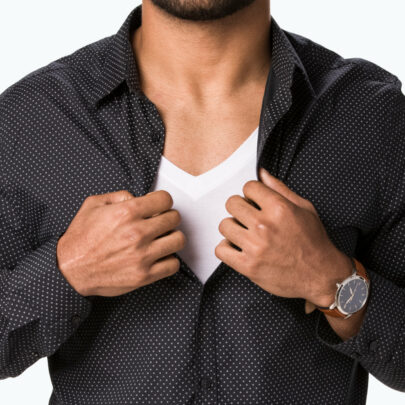
Meet Your New Favorite Undershirts
-
Anti-Pilling
-
Incredibly Soft
-
Breathable
-
Moisture-Wicking
-
4-Way Stretch
-
Anti-Odor
Try UnderFit for 100 days. Experience mind-blowing softness or get your money back.
Welcome Back
Don’t have an account? Sign up
New Here?
Already have an account? Log in
Forgot your password?
We will send you an email to reset your password.
